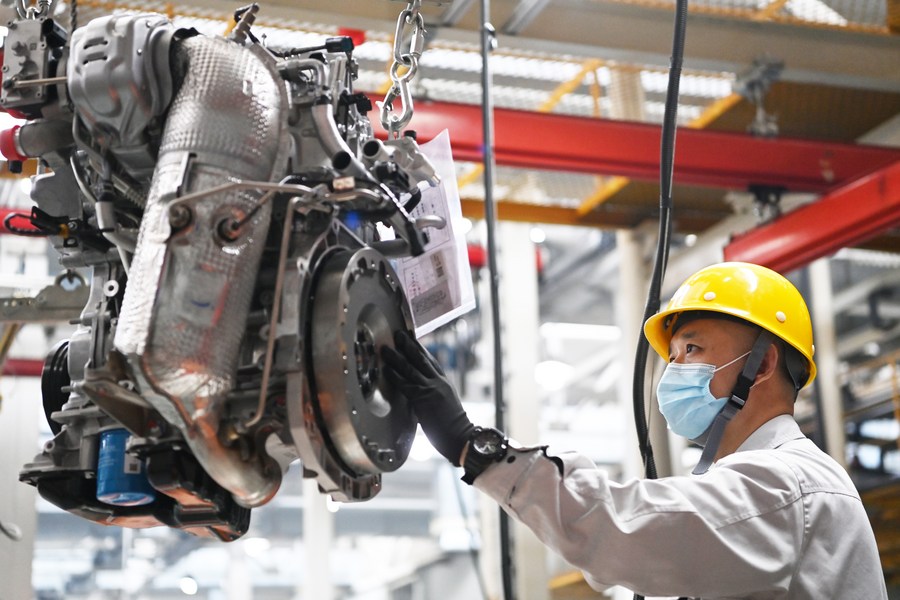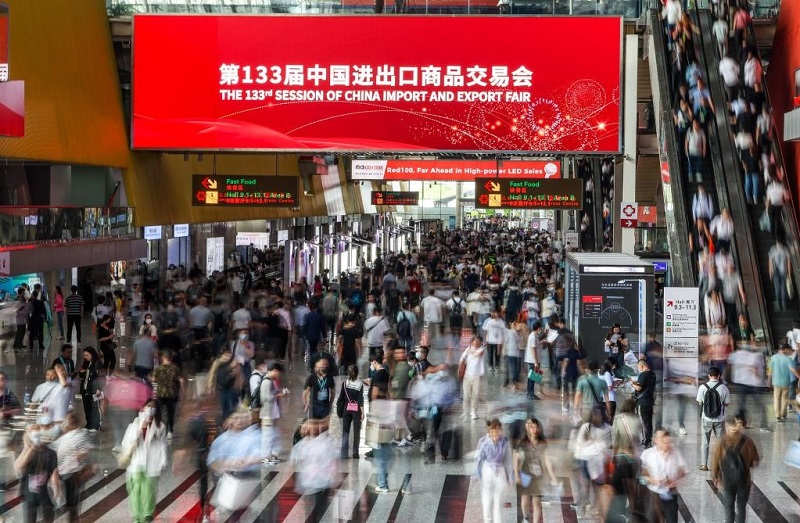Brisk Chinese Market Buoys up Global Confidence

Such confidence in the Chinese market and its commitment to opening-up and win-win cooperation, along with China’s uplifting economic performance, vitalizes the global market, bringing hope to a world beleaguered by stagnant growth, regional conflicts, and climate change challenges, among other uncertainties.
As world leaders marshal their visits to Beijing, keen to engage in more cooperation with China, the world’s second largest economy hits full throttle in its mounting of a strong comeback. China’s businesses logged a 4.7 percent year-on-year increase in sales revenue in the first quarter of 2023. Service industries made a decisive rebound, sales revenues for sectors like accommodation and catering having risen an impressive 20 percent or more. Meanwhile, China’s foreign trade also got off to a flying start in the first quarter, when its total goods trade reached RMB 9.89 trillion, a year-on-year growth of 4.8 percent.
The International Monetary Fund (IMF) predicted on April 11 that China’s economy will grow 5.2 percent in 2023. “The reopening and growth of its economy will likely generate positive spillovers …. with even greater spillovers for countries with stronger trade links and reliance on Chinese tourism,” indicated the latest IMF World Economic Outlook.
The full recovery of China’s domestic demand could lift global GDP by an estimated 1 percent in 2023, according to a recent Goldman Sachs report. And on April 10, the World Bank raised its global growth forecast for 2023 from 1.7 percent to 2 percent, by virtue of China’s recovery. World Bank Group President David Malpass ascribed the upward revision to the Chinese economy’s more optimistic outlook since the country optimized its COVID-19 response, according to Reuters.

As a consumer products trendsetter backed by a huge domestic market, that the country’s third China International Consumer Products Expo (CICPE) held in Haikou in south China’s Hainan Province attracted a record-breaking 320,000 visits, came as no surprise. The six-day expo, concluding on April 15, played host to more than 3,382 brands – 300 of which launched 1,000 or more new products – from 65 countries and regions. Meanwhile, overseas buyers from 35 countries and regions seeking business deals accounted for around 2,000 of expo attendees.
Italy, guest country of honor at the 2023 CICPE, built a superlative 1,800-square-meter pavilion showcasing 147 brands. Italian undersecretary of state to the Ministry of Foreign Affairs and International Cooperation Maria Tripodi noted at the CICPE opening ceremony that the extensive participation of Italian enterprises signified the great store they lay on the Chinese market.
The sanguine prospects of China’s consumer market and the country’s commitment to higher-level opening-up prompted multinationals across the globe to expand their presence in China. In January 2023, U.S. beauty titan Estée Lauder raised the curtain on its China travel retail headquarters in Hainan, having inaugurated its China Innovation Labs in Shanghai in December 2022 which, according to Xinhua, by 2025 is expected to become the largest cutting-edge technology research center in Estée Lauder’s international market. Estée Lauder CEO Fabrizio Freda spoke, in an interview with Xinhua, of the group’s high confidence in the Chinese market, and its cognizance of the importance of Hainan’s offshore duty-free market.
On April 15, the 133rd China Import and Export Fair, also known as the Canton Fair, and generally regarded as a main gauge of China’s foreign trade, commenced in Guangzhou, south China’s Guangdong Province. The export section of the event, which runs through to May 5, accommodates around 5,700 firms with leading brands and technologies. The import section, meanwhile, hosts 508 companies from 40 countries and regions, including developed economies like the United States, Canada, Italy, Germany, and Spain.

This full resumption of offline economic activities, trade fairs, and exhibitions underscores China’s commitment to promoting high-standard opening-up, as well as signifying a burgeoning Chinese economy. China will follow the trend of consumption upgrading and actively expand imports, boost industrial transformation and upgrading, promote the coordinated development of trade in goods and services, support innovation in the business patterns of foreign trade, and amplify the interplay between domestic and international markets and resources, said Chinese Vice Premier He Lifeng while addressing the opening ceremony of the Canton Fair.
World Bank Group President David Malpass recently observed, according to Xinhua, that China’s economic pickup is an “additive” needed for a year like 2023, when global growth is expected to be weak, and which reflects “explicit efforts to have a faster opening process for China and to have the supply chains begin to come back together as they feed into global supplies.”
Economic cooperation is always a top priority during state visits by foreign leaders. When French President Emmanuel Macron came to China in early April, 18 agreements between Chinese and French companies were inked to expand cooperation in areas across the board, including manufacturing, green development, new energy, and innovation. During his state visit to China, Brazilian President Luiz Inacio Lula da Silva also witnessed the signing of a range of bilateral cooperation documents – in areas including trade and investment, digital economy, scientific and technological innovation, information, and communications.
Such confidence in the Chinese market and its commitment to opening-up and win-win cooperation, along with China’s uplifting economic performance, vitalizes the global market, bringing hope to a world beleaguered by stagnant growth, regional conflicts, and climate change challenges, among other uncertainties.
 Facebook
Facebook
 Twitter
Twitter
 Linkedin
Linkedin
 Google +
Google +










